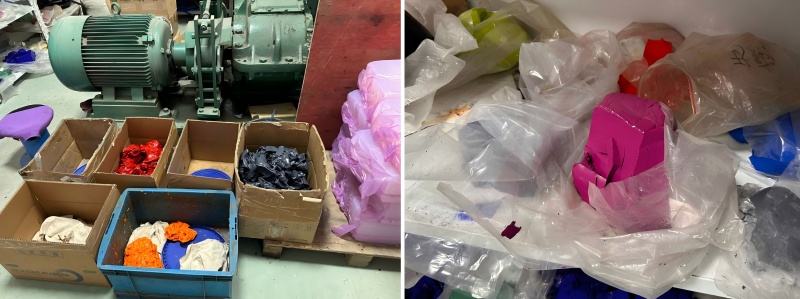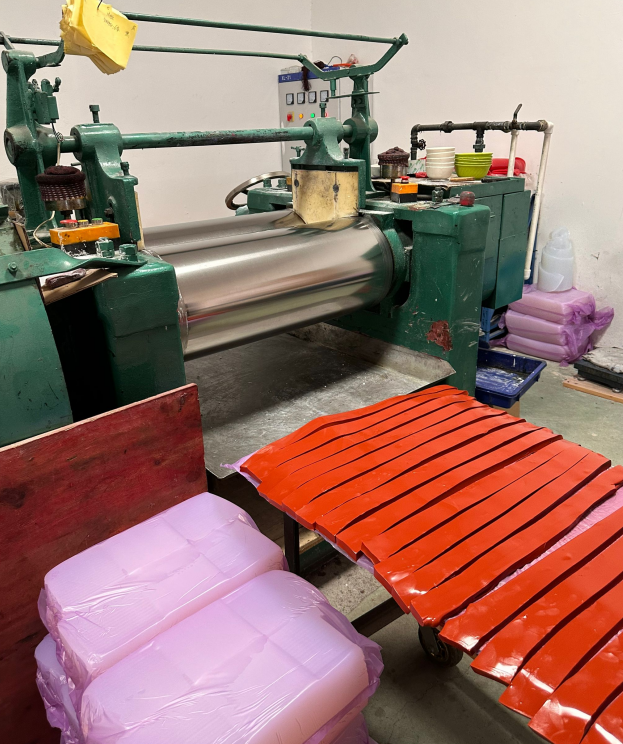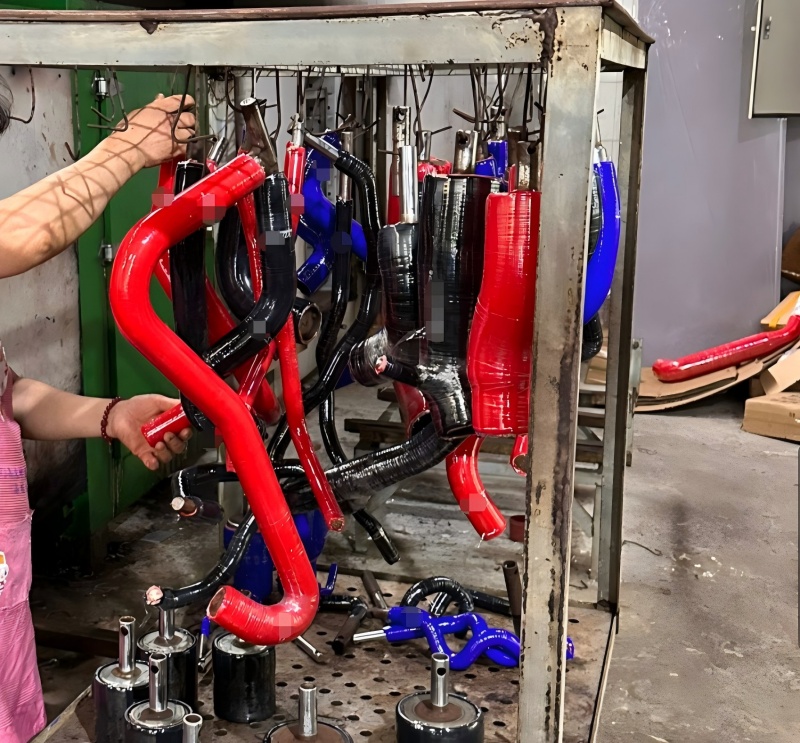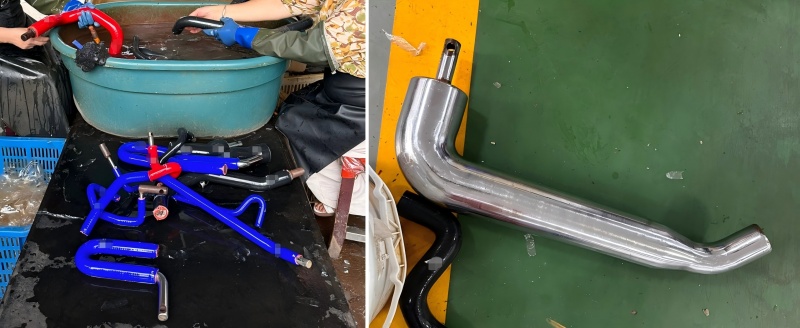Les tuyaux en silicone sont généralement fabriqués selon le procédé « extrusion continue + vulcanisation à air chaud ». La chaîne de production fonctionne comme un étirage de nouilles : le caoutchouc est extrudé en forme tubulaire, puis durci au fur et à mesure de son avancement. Enfin, le matériau est découpé et enroulé. Voici le processus détaillé.
1. Sélection des matières premières
Caoutchouc brut : En général, on choisit du caoutchouc méthylvinylique (MVQ) avec une dureté Shore A de 50 à 80.
Colorants/Pigments : Pigments minéraux non toxiques de qualité alimentaire. Système polyvalent au sulfure de platine de qualité médicale.

2. Ingrédients et mélange
Utilisez un mélangeur de 25 L ou un broyeur ouvert pour mélanger le caoutchouc brut, les charges, la mère de couleur et l'agent de vulcanisation.
Bien mélanger et laisser reposer 8 à 12 heures pour éliminer le stress. Couper ensuite en lanières ou en morceaux pour la conservation.

3. Moulage par extrusion
Extrudeuses à vis simple ou double, température du cylindre 45 - 80 ℃, tête de filière 80 - 120 ℃.
4.Une sulfuration (à l'aide d'un tunnel à air chaud)
Le tunnel mesure de 6 à 12 mètres de long, avec une température de 200 à 300 degrés Celsius et dure de 30 à 120 secondes.
5. Vulcanisation secondaire (vulcanisation au four profond)
À 200 ℃ pendant 2 à 4 heures, décomposez et volatilisez complètement les peroxydes résiduels/substances de faible poids moléculaire, améliorant ainsi la résistance à la chaleur et réduisant la déformation permanente par compression.

6. Refroidissement en ligne et mesure du diamètre
L'appareil est refroidi à température ambiante par pulvérisation ou refroidissement par air ; l'instrument de mesure du diamètre laser fournit un retour d'information en temps réel et tout écart déclenchera une alarme automatique.
7. Démoulage, découpe

8.Inspection et emballage
Aspect : Sans bulles, impuretés et jaunissement.
Dimensions : Diamètre intérieur, épaisseur de paroi, ellipticité
l 